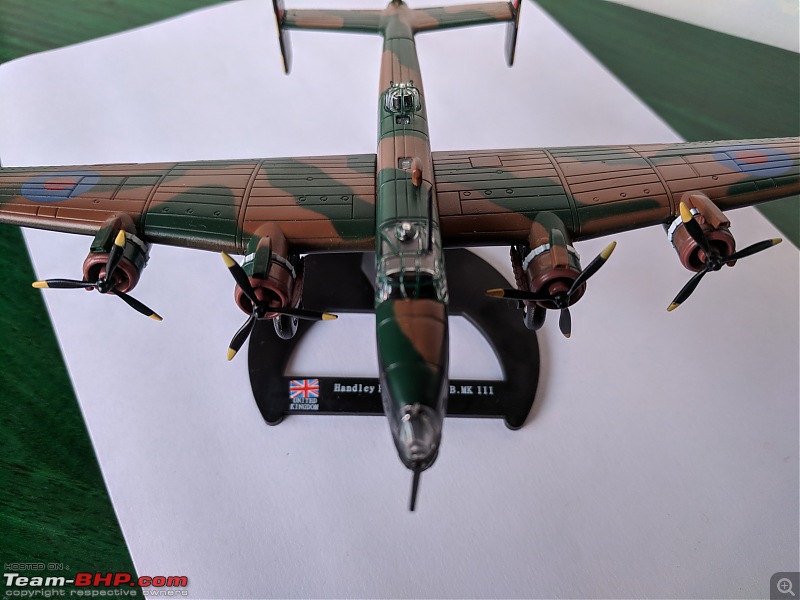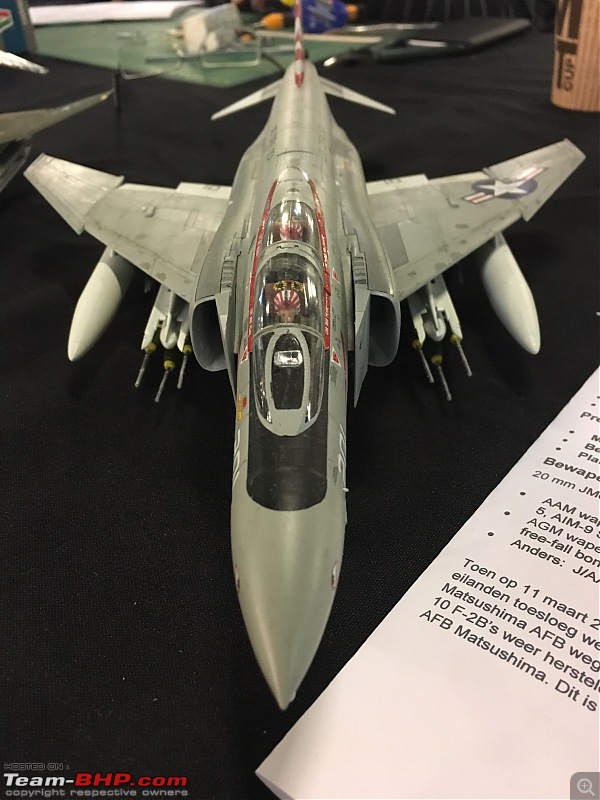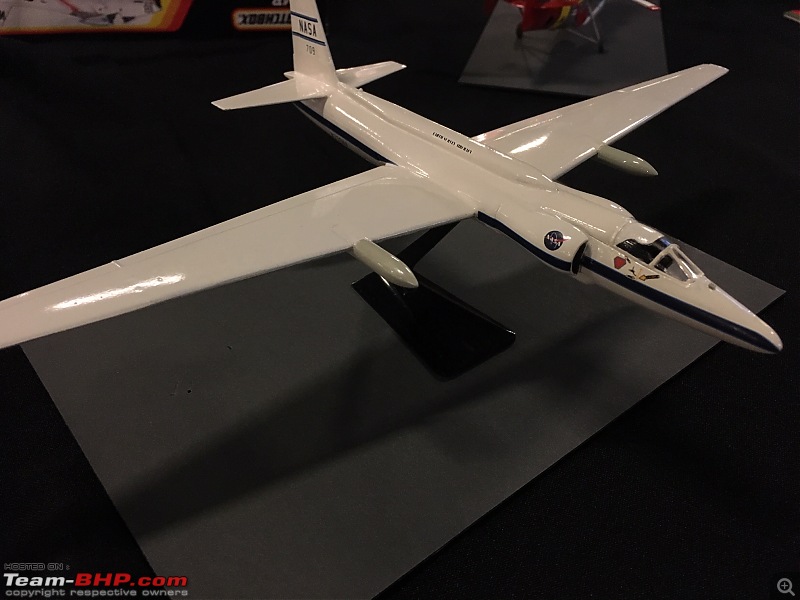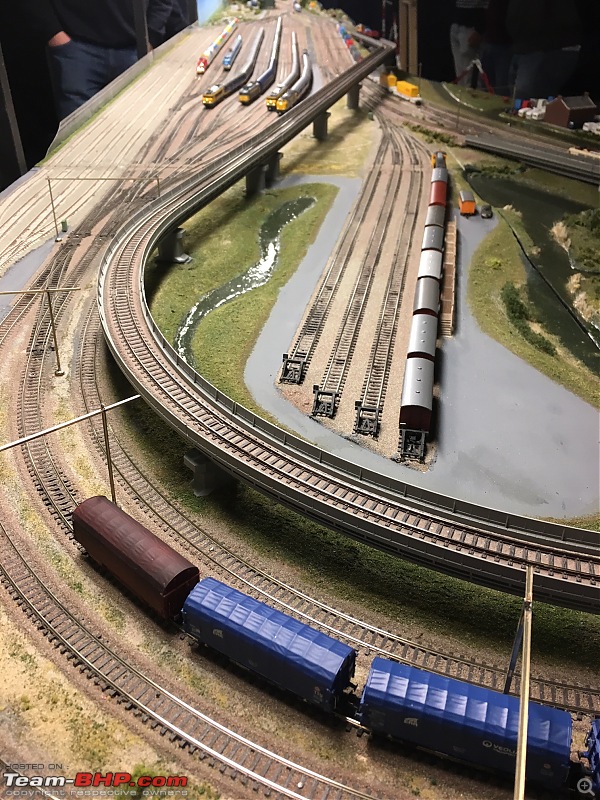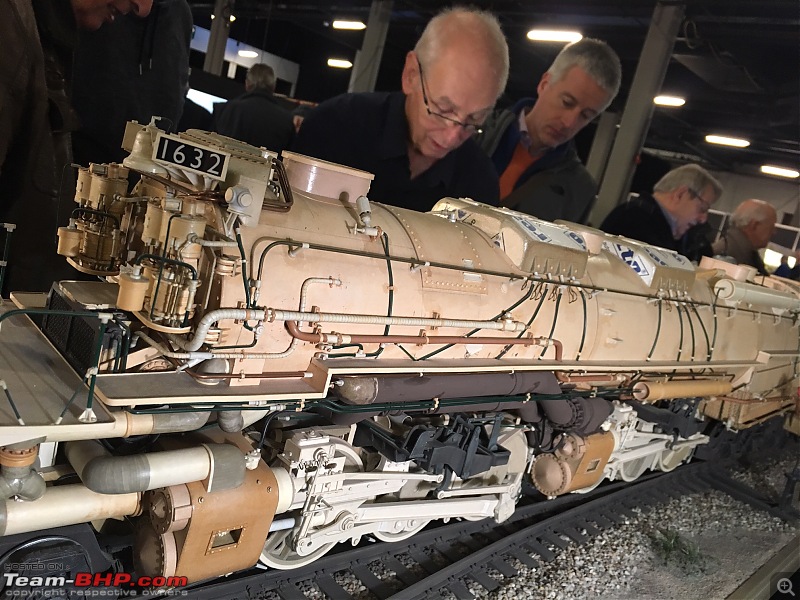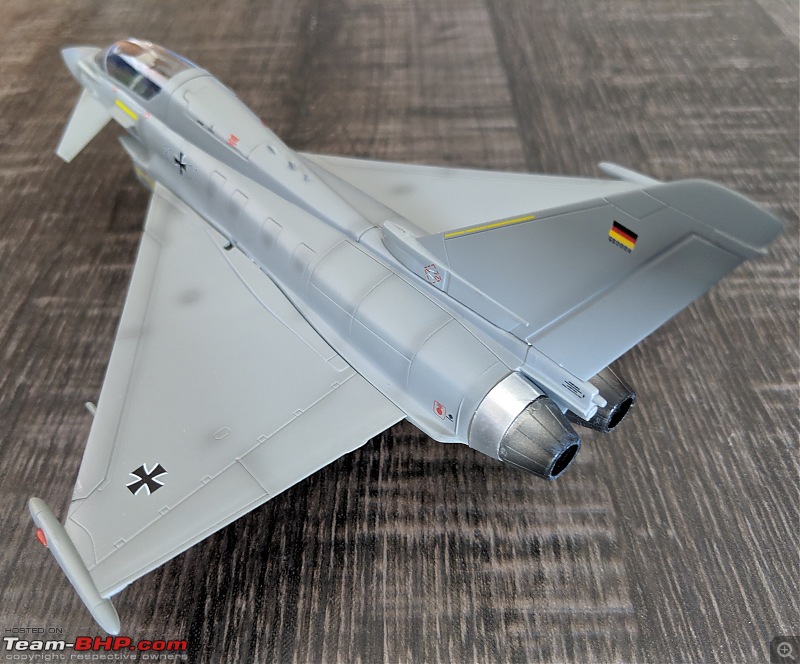Quote:
Originally Posted by V.Narayan  Nice big Air Asia. How many A320s now in your fleet. |
Let me count
1:100
Air Asia India A320NEO
1:150
Air Asia India A320 (Standard Livery)
Air Asia India A320 (JRD Tata Livery)
1:200
Indian Airlines A320 VT-EYH
Indian Airlines A320 VT-EVP
Indigo A320 VT-IFZ
Airbus House Colours A320NEO
PIA A320 AP-BLC
Luftwaffe A319 15+02
1:400
Air India A320NEO VT-EXF
Total : 10
Quote:
Originally Posted by Foxbat  What brand is this? plastic or diecast? |
Same as your SMB.2 - Altaya.
Quote:
Originally Posted by Foxbat  This one was bought on board the flight ? How is the detailing compared to the 1:150 models you have ? |
I bought from DBJets. Detailing is slightly better than the 1/150 ones. The model has overwing exit markings and silver coloured panels on the wings , which are missing on the 1/150 ones. Paint quality is a little iffy on the 1/100 model though.
1:72 EF-2000 FGR.4 No. 29 Squadron RAF 100th anniversary(JC Wings)
In 2015, Royal Air Force No.29 Squadron celebrated its 100th year in service. To help mark the occasion, one of their Eurofighter Typhoons was painted in special markings depicting, amongst other things, some of the various aircraft flown by the squadron in years gone by.

505th of 600 manufactured...

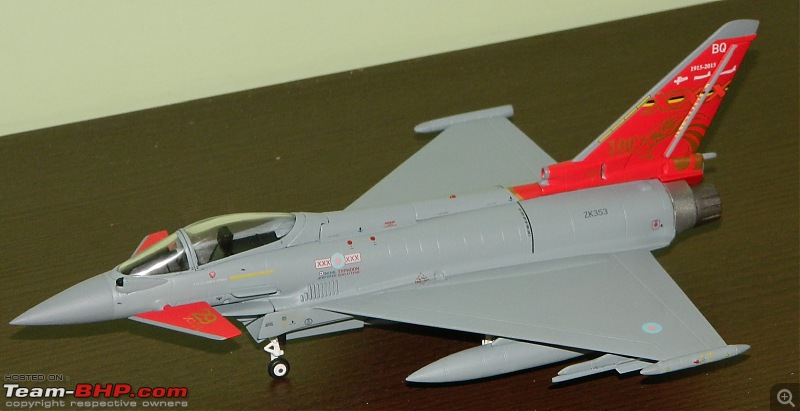
Wondering why they XXX had been painted on the canards instead of XXIX( to represent 29? Since the late 1920s, the squadron marking has been three (red) Xs (XXX). Since this closely resembles the Roman numeral for "29" (XXIX) there is a belief among current squadron personnel that this originated as a "misspelling" of the Roman numeral. Although various versions of the tradition are put forward, the most common explanation is that a mis-understood instruction to ground crew to paint "2 X's in front of the roundel and IX behind it" meaning "X,X,(roundel), and 'IX' or 'one-X'" resulted in "XX(roundel)'one times' X". In fact, the marking was always applied as "XXX(roundel)XXX" or as "XXX(roundel)" on smaller types, such as Siskins.
It seems probable that the original adoption of "XXX" for the 1930s squadron marking was nothing to do with Roman numerals, but was a reference to the brewers' mark for "extra strong", frequently applied to kegs of beer, and that it is only a coincidence that this resembles the numeral for "29" (XXIX). It should be noted that the use of Roman numerals for numbering RAF units is a relatively modern development and it was certainly not the practice in the RAF in the 1920s. Nor, so far as it is known, has 29 squadron ever been officially referred to as "XXX squadron" – or as "XXIX squadron".

Flight Lieutenant Jonny Dowen - RAF EF-2000 Display Pilot , whose flew this aircraft in that livery

The tail has depictions of three aircraft flown by the 29 squadron in the last 100 years. can't make out the first and the third one but the middle one is easily recognizable as the Dehavilland Mosquito.
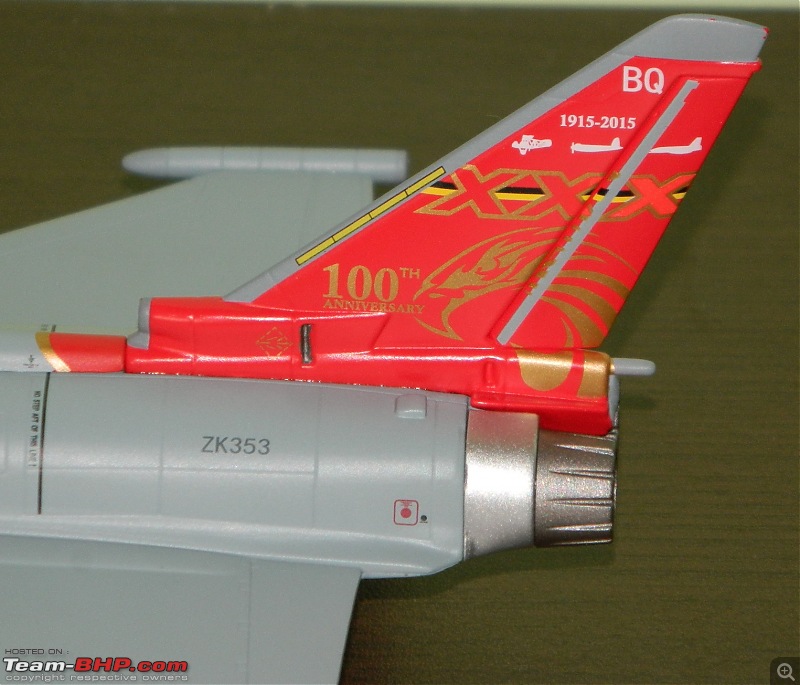

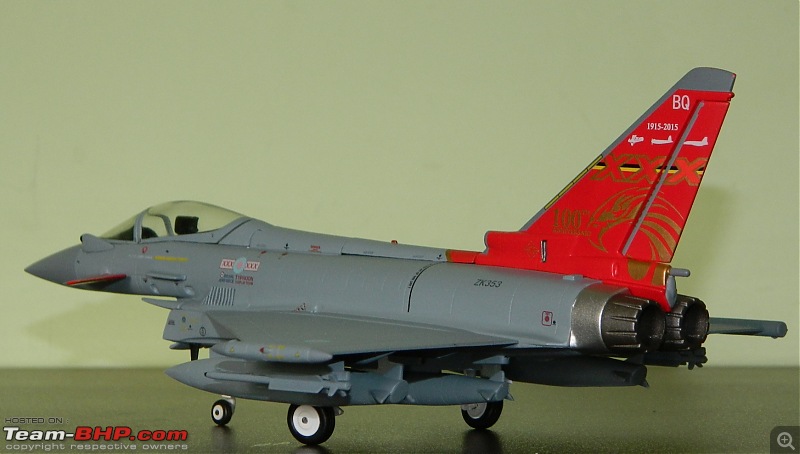

Model armed with three drop tanks , 2 X IRIS-T IRMs( factually incorrect as the RAF uses AIM-132 ASRAAMs on its Typhoons). The pod on the right wing tip houses towed radar decoys. The pod on the left wingtip houses electronic sensors
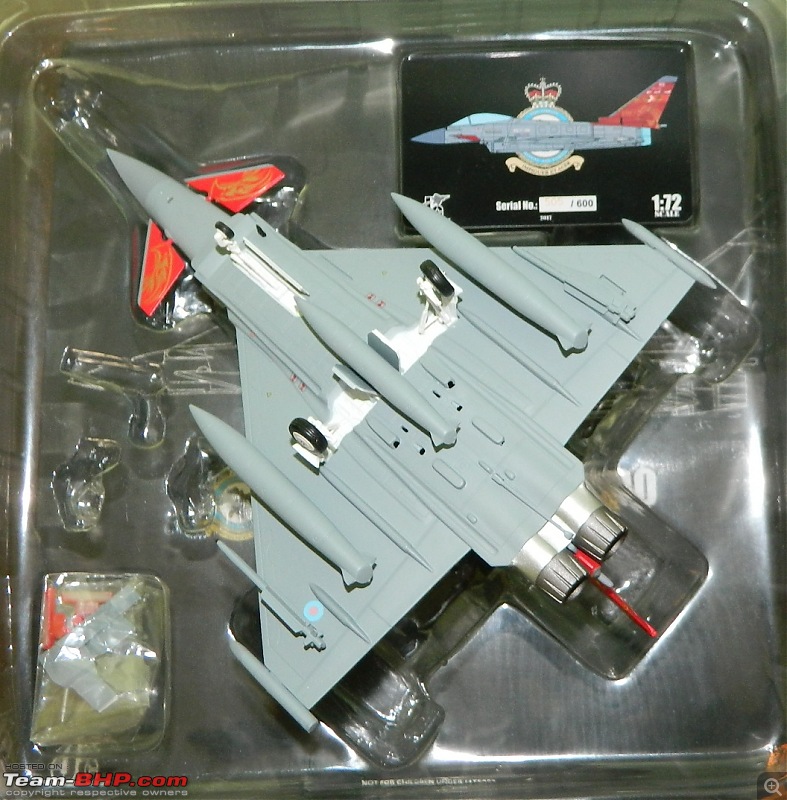
The airbrake on the model can be displayed like this; but I haven't tried pulling it out.
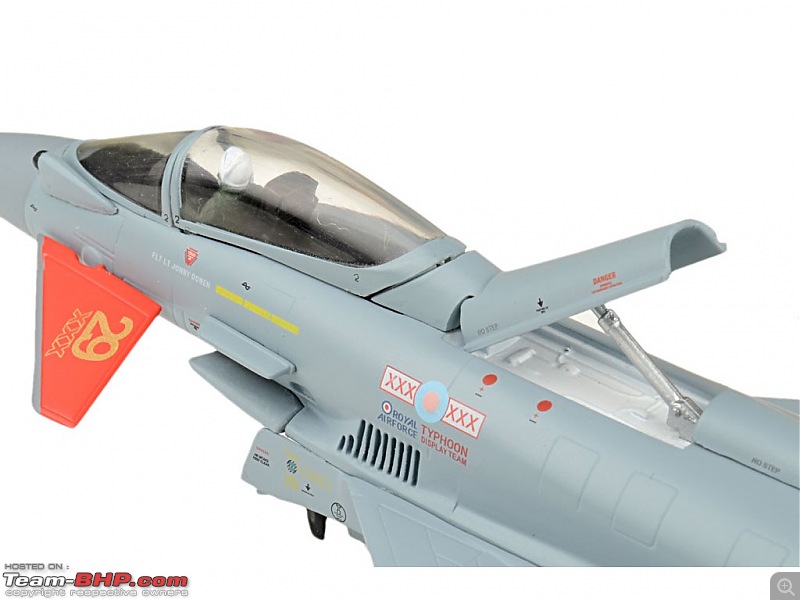
ZK353, 2013 Eurofighter EF-2000 Typhoon FGR4, C/N: BS114/411 BQ 1915-2015 100th anniversary Raf Cosford England UK

The Eurofighter Typhoon (EF-2000) is a twin-engine, canard–delta wing, multirole fighter. The Typhoon was designed originally as an air superiority fighter[8] and is manufactured by a consortium of Airbus, BAE Systems and Leonardo that conducts the majority of the project through a joint holding company, Eurofighter Jagdflugzeug GmbH formed in 1986. The aircraft's development effectively began in 1983 with the Future European Fighter Aircraft programme, a multinational collaboration among the UK, Germany, France, Italy and Spain. Disagreements over design authority and operational requirements led France to leave the consortium to develop the Dassault Rafale independently. A technology demonstration aircraft, the British Aerospace EAP, first took flight on 6 August 1986; the first prototype of the finalised Eurofighter made its first flight on 27 March 1994. The aircraft's name, Typhoon, was adopted in September 1998; the first production contracts were also signed that year.
Political issues in the partner nations significantly protracted the Typhoon's development; the sudden end of the Cold War reduced European demand for fighter aircraft, and debate existed over the aircraft's cost and work share. The Typhoon entered operational service in 2003; it has entered service with the air forces of Austria, Italy, Germany, the United Kingdom, Spain and Saudi Arabia. The air forces of Oman, Kuwait and Qatar are export customers, bringing the procurement total to 599 aircraft as of 2016.
The Eurofighter was one of the six aircraft competing for the Indian MRCA competition for 126 multi-role fighters. In April 2011, the Indian Air Force (IAF) shortlisted the Dassault Rafale and Eurofighter Typhoon for the US$10.4 billion contract. On 31 January 2012, the IAF announced the Rafale as the preferred bidder in the competition.
There had been nine fatal crashes of the EF-2000(four of them fatal). A twin seat EF-2000 almost crashed near Fairford in 2005.Fast forward to 01:23 to see what happened.
































